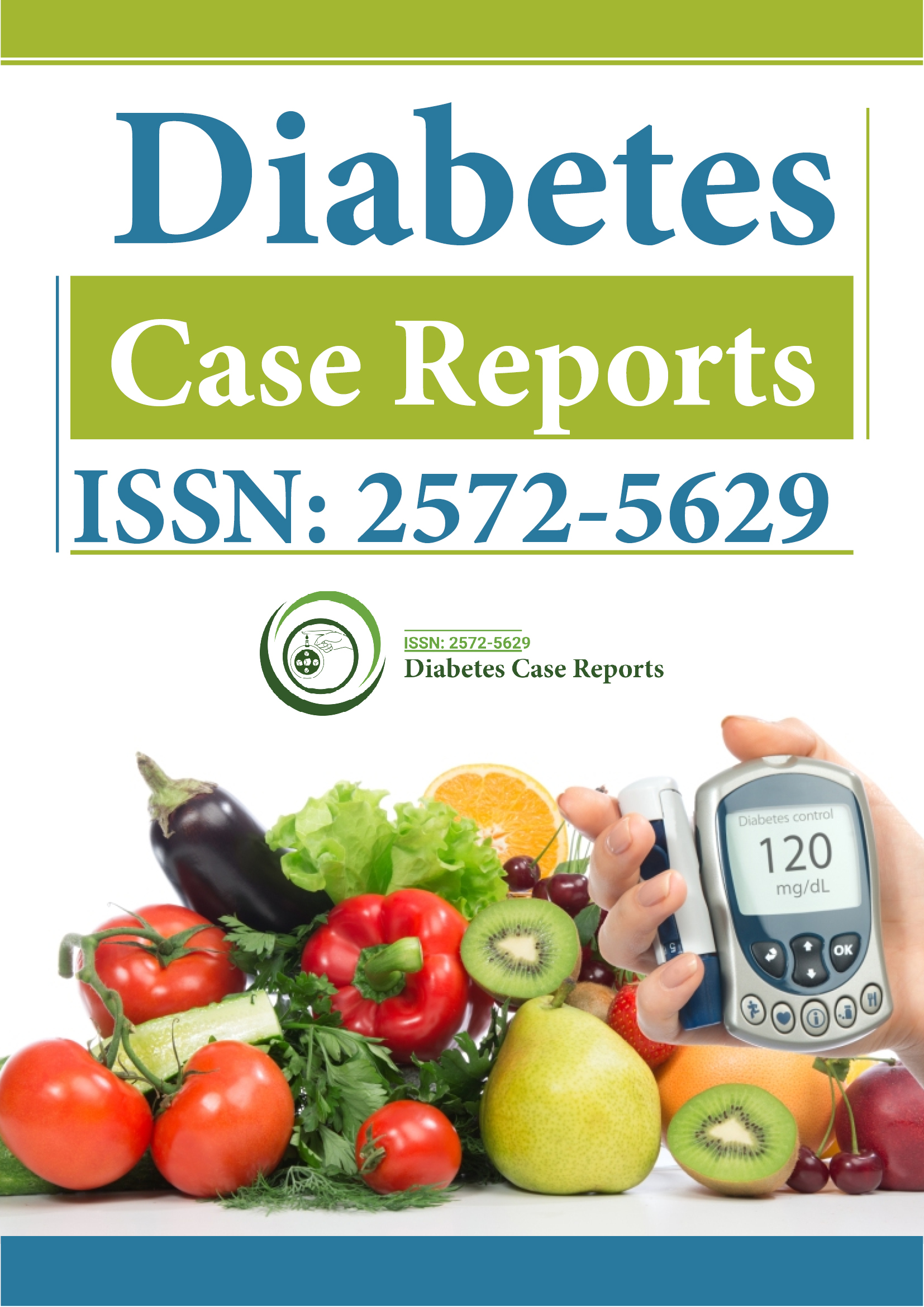Indexed In
- RefSeek
- Hamdard University
- EBSCO A-Z
- Euro Pub
- Google Scholar
Useful Links
Share This Page
Journal Flyer

Open Access Journals
- Agri and Aquaculture
- Biochemistry
- Bioinformatics & Systems Biology
- Business & Management
- Chemistry
- Clinical Sciences
- Engineering
- Food & Nutrition
- General Science
- Genetics & Molecular Biology
- Immunology & Microbiology
- Medical Sciences
- Neuroscience & Psychology
- Nursing & Health Care
- Pharmaceutical Sciences
Opinion Article - (2024) Volume 9, Issue 4
Gastrointestinal Manifestations of Diabetes: Review on Digestive Health Challenges
Nikolay Palumbo*Received: 20-Nov-2024, Manuscript No. DCRS-24-28240; Editor assigned: 22-Nov-2024, Pre QC No. DCRS-24-28240(PQ); Reviewed: 10-Dec-2024, QC No. DCRS-24-28240; Revised: 17-Dec-2024, Manuscript No. DCRS-24-28240(R); Published: 24-Dec-2024, DOI: 10.35841/2572-5629.24.9.227
Description
Diabetes, a chronic metabolic disorder characterized by elevated blood sugar levels, exerts a profound influence beyond its immediate impact on glucose metabolism. The intricate relationship between diabetes and the Gastrointestinal (GI) tract presents a significant spectrum of digestive health challenges. This review delves into the multifaceted interplay between these two systems, exploring the common GI complications encountered by individuals with diabetes, their impact on overall health and the strategies for effective management. The connection between diabetes and the GI tract is multifaceted and deeply interconnected. At the core of this relationship lies the impact of hyperglycemia (high blood sugar) on the delicate balance within the digestive system. Prolonged exposure to high blood sugar levels can damage nerves throughout the body, including those innervating the GI tract. This diabetic neuropathy disrupts the coordinated contractions of the muscles involved in digestion, leading to motility disorders. High blood sugar also damages blood vessels, compromising blood flow to the GI organs. Reduced blood supply impairs nutrient absorption, weakens the integrity of the mucosal lining and hinders the healing process. Diabetes can disrupt the autonomic nervous system, which controls involuntary functions like digestion, heart rate and blood pressure. This autonomic dysfunction can lead to a range of GI issues, including altered gut motility, impaired sphincter function and decreased digestive enzyme secretion. Elevated blood sugar levels create an environment conducive to metabolic disturbances. Insulin resistance, a hallmark of diabetes, can contribute to the accumulation of fat within the liver (non-alcoholic fatty liver disease) and other GI organs. The interaction between diabetes and the GI tract manifests in a diverse array of complications, each presenting unique challenges for individuals with the condition: This debilitating condition arises from the delayed emptying of the stomach due to impaired muscle contractions. Early satiety, nausea and vomiting, bloating, abdominal discomfort, postprandial fullness and upper abdominal pain are common manifestations. Gastroparesis significantly impacts blood sugar control by disrupting the absorption of nutrients, leading to unpredictable postprandial hyperglycemia. Nerve damage in the intestines can disrupt the coordinated contractions of the intestinal muscles, leading to frequent and loose stools. Watery stools, abdominal cramps, urgency to defecate and potential for dehydration are characteristic features. Chronic diarrhea can lead to nutrient deficiencies, dehydration and significant weight loss, further complicating diabetes management. Conversely, nerve damage can also slow down the movement of stool through the colon, resulting in constipation. Hard, dry stools, infrequent bowel movements, straining during defecation and abdominal pain or bloating are common presentations. Constipation can contribute to discomfort, hemorrhoids and diverticular disease, impacting overall quality of life. Diabetes can weaken the lower esophageal sphincter, an important muscle that prevents the backflow of stomach acid into the esophagus. Heartburn, chest pain and acid reflux are common manifestations. Gastroesophageal Reflux Disease (GERD) can cause significant discomfort and potentially lead to esophageal erosion and strictures. Insulin resistance, a key feature of diabetes, drives the accumulation of fat within the liver. Non-Alcoholic Fatty Liver Disease (NAFLD) can progress to more serious liver conditions, such as Nonalcoholic Steatohepatitis (NASH), cirrhosis and even liver failure. In some cases, diabetes can damage the pancreas, the organ responsible for producing insulin and essential digestive enzymes. Impaired pancreatic function can lead to malabsorption of nutrients, further exacerbating the challenges of diabetes management. The presence of GI complications can significantly complicate the management of diabetes, creating a potential vicious cycle.
Conclusion
Malabsorption of nutrients due to gastroparesis or pancreatic insufficiency can lead to unpredictable blood sugar fluctuations, making it difficult to achieve and maintain glycemic control. Diarrhea can contribute to dehydration and electrolyte imbalances, further impacting blood sugar levels. Gastrointestinal symptoms, such as nausea, vomiting, abdominal pain and frequent bowel movements, can significantly impact a person's quality of life, leading to fatigue, discomfort and social isolation. Managing GI complications in diabetes requires a multifaceted approach that addresses the underlying causes and alleviates the associated symptoms. Maintaining tight glycemic control remains the cornerstone of preventing and managing GI complications.
Citation: Palumbo N (2024). Gastrointestinal Manifestations of Diabetes: Review on Digestive Health Challenges. Diabetes Case Rep. 9:227.
Copyright: © 2024 Palumbo N. This is an open-access article distributed under the terms of the Creative Commons Attribution License, which permits unrestricted use, distribution and reproduction in any medium, provided the original author and source are credited.
